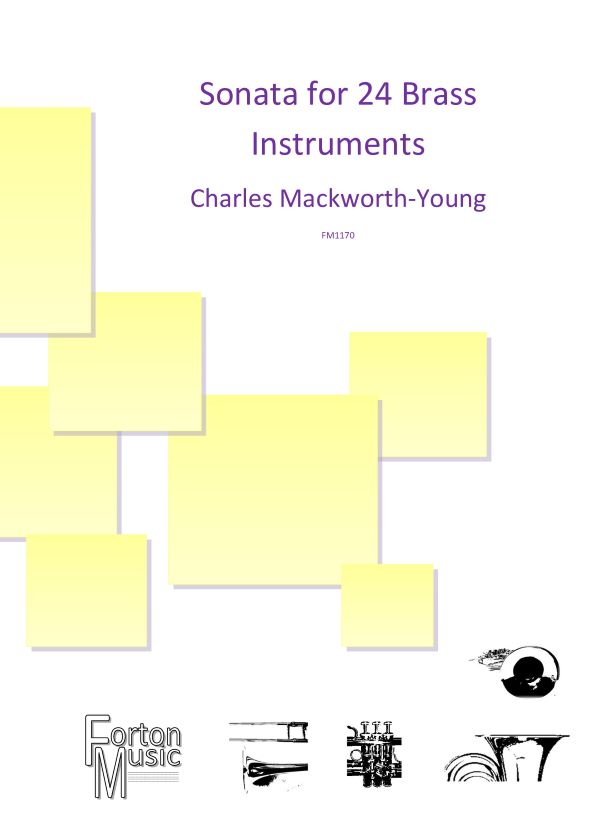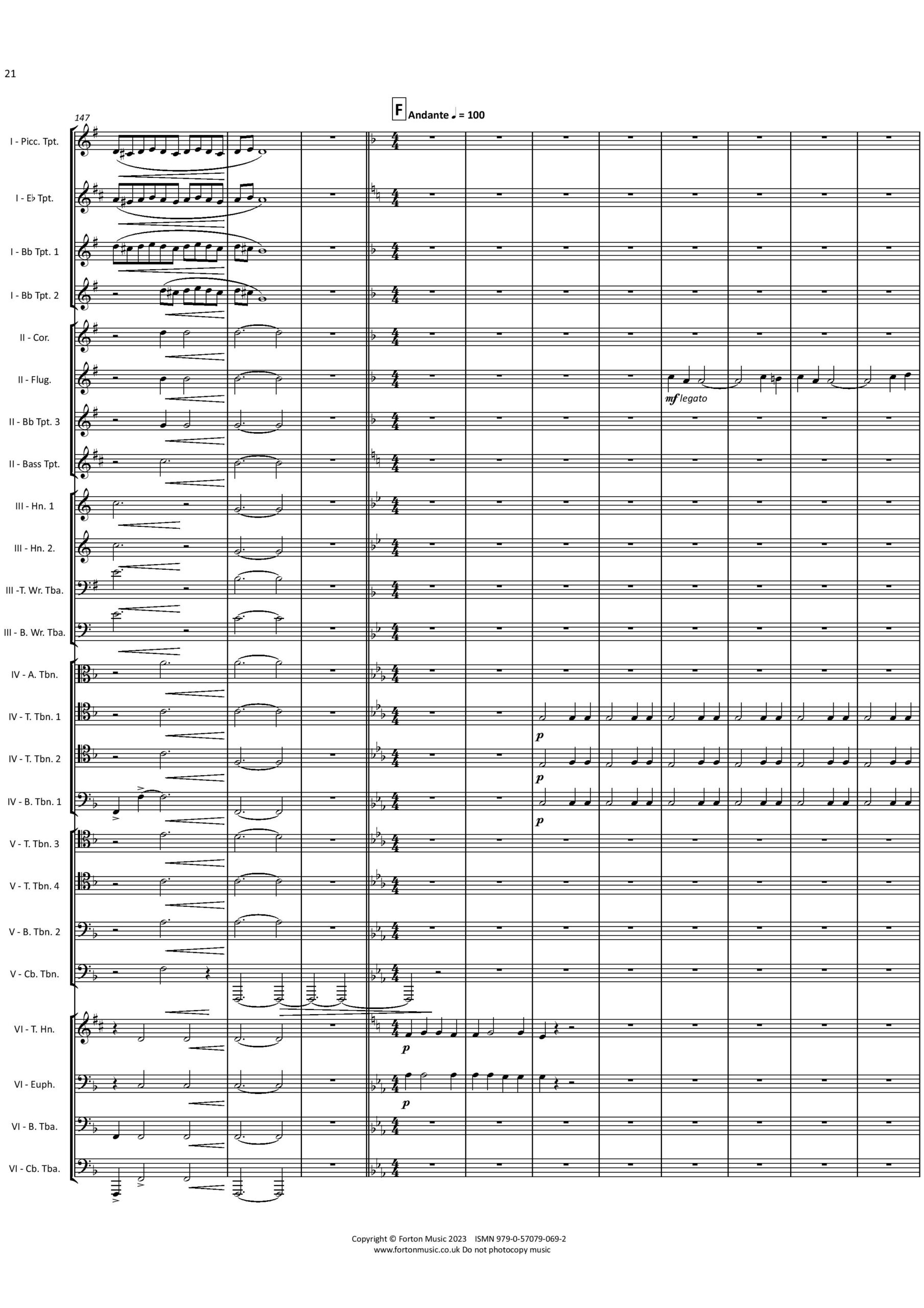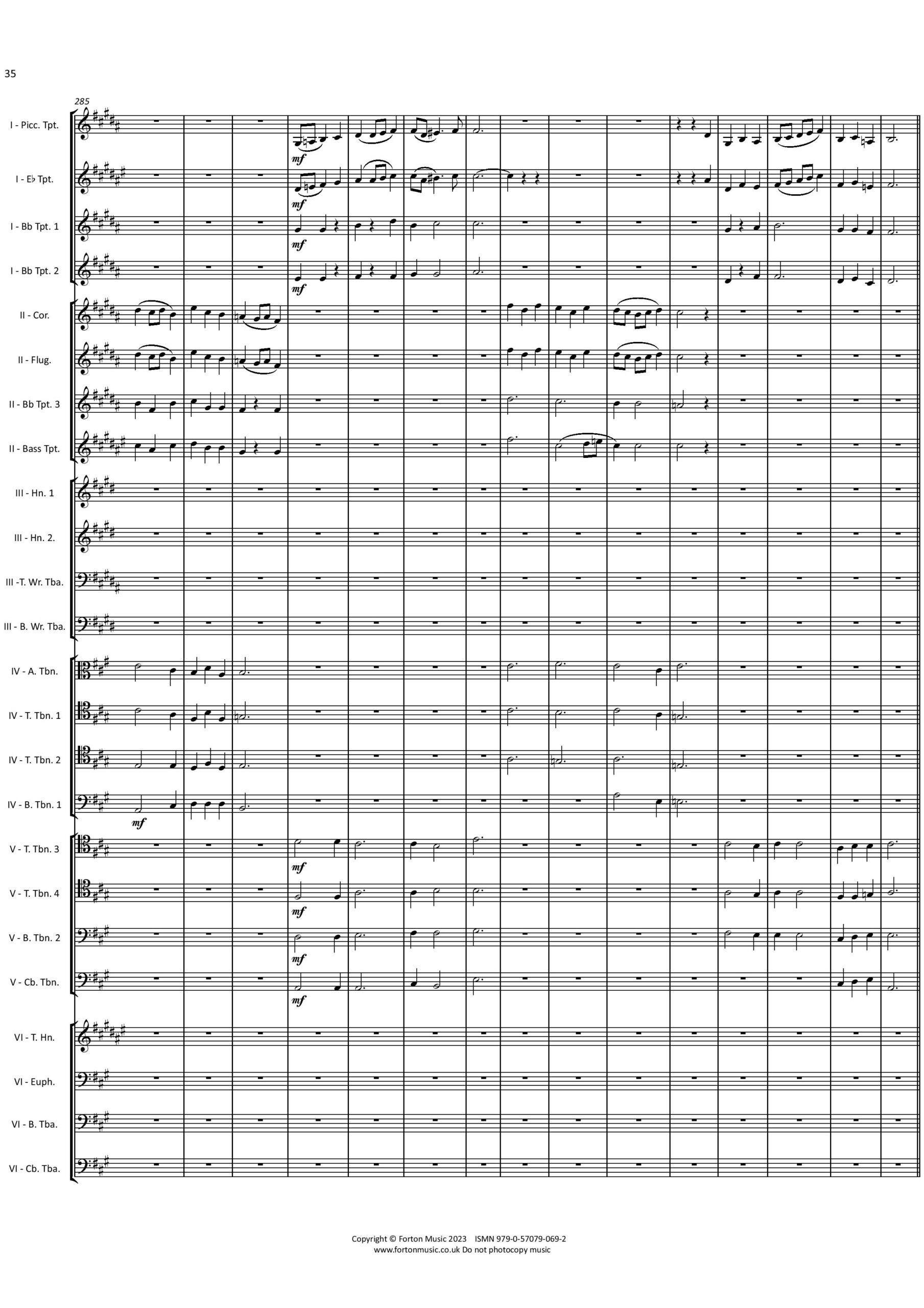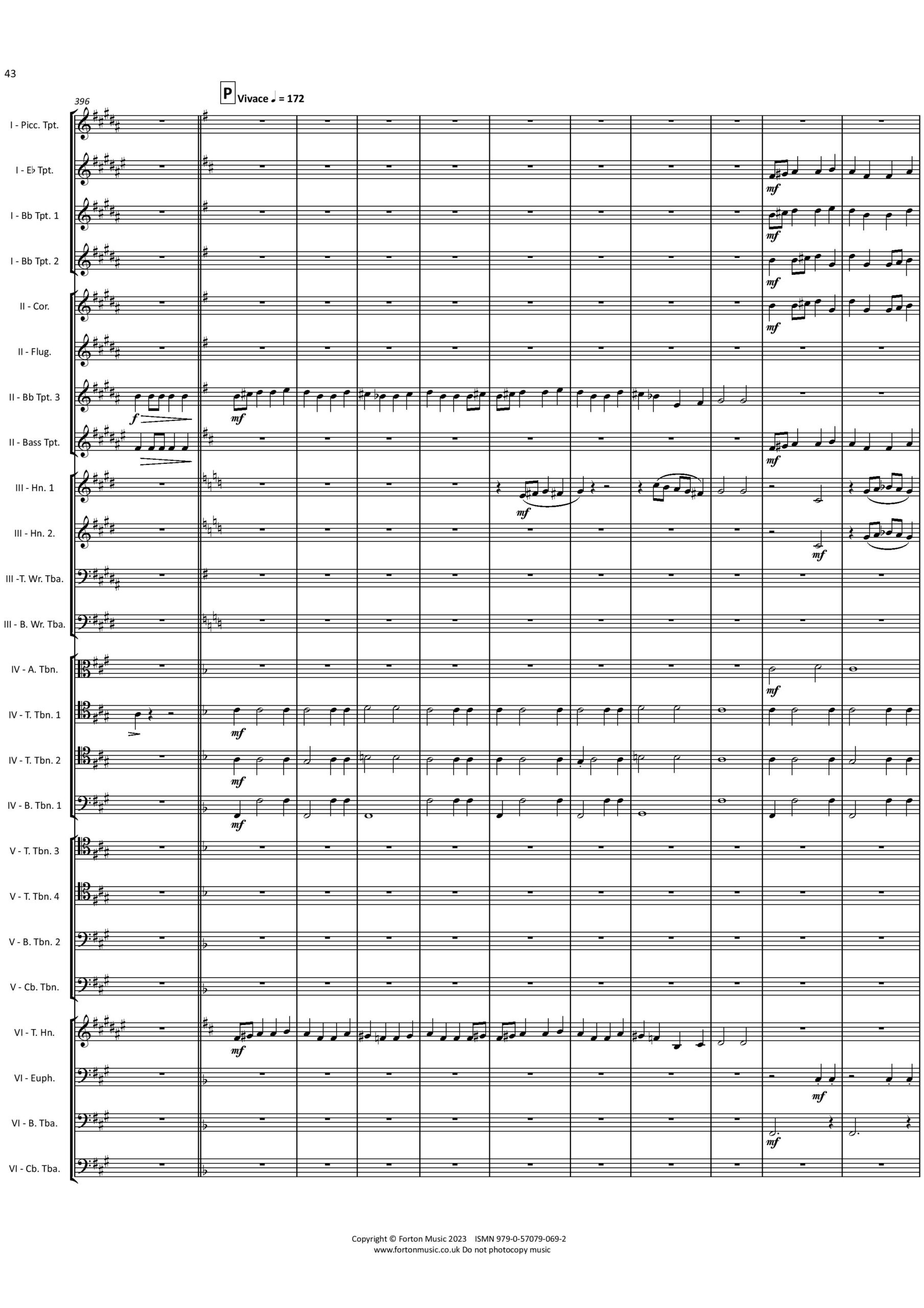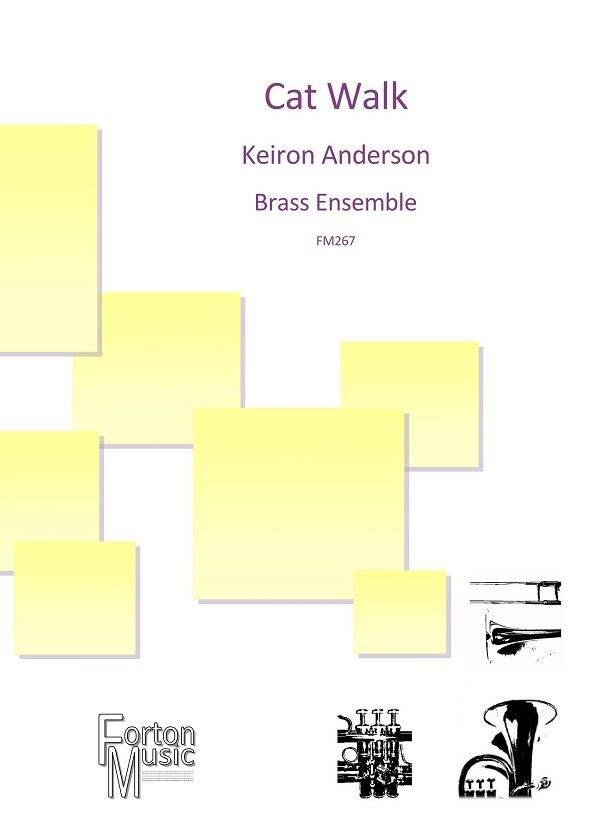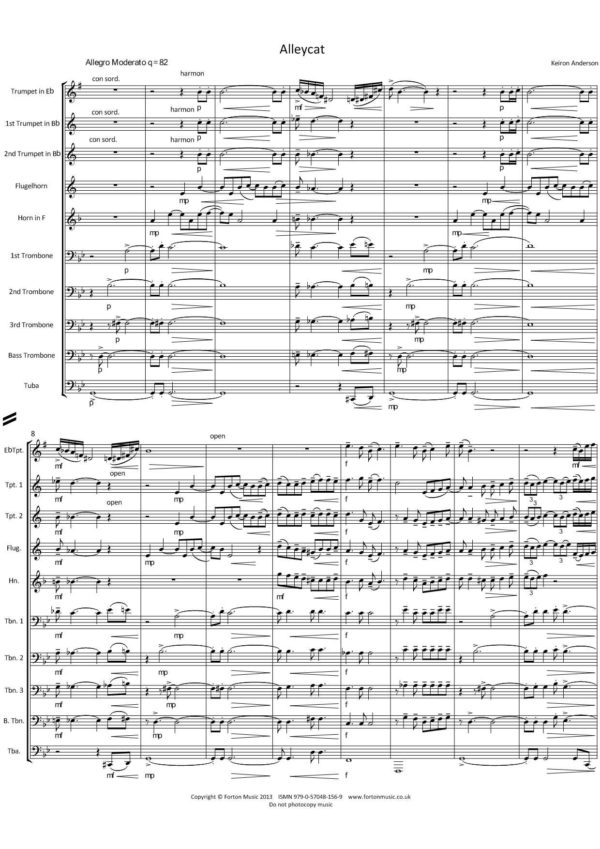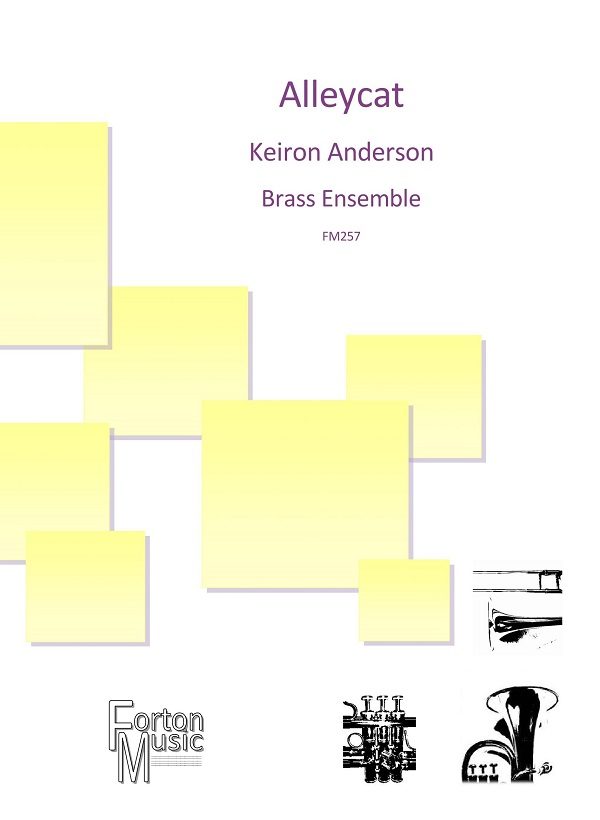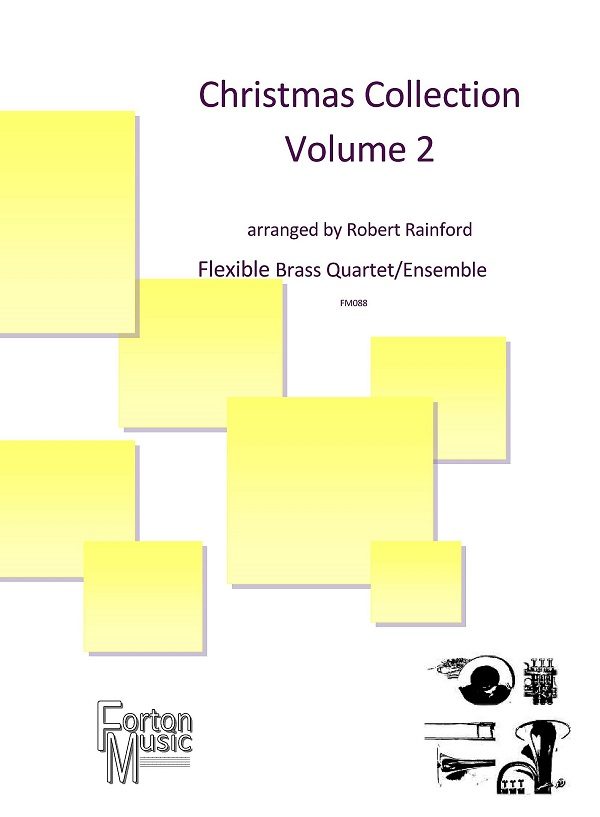Click the links below to see and hear each section of the piece.
Sonata for 24 Brass Instruments
£75.00 – £100.00
Description
The title “Sonata” reflects its use for instrumental pieces in both the Italian late Renaissance and the Baroque periods. It is also a reference to classical sonata form. The work contains allusions to these earlier forms, including Venetian antiphonal brass music, and dance sequences that feature in early instrumental suites. The piece opens with an introduction, the first five notes of which form the basis from which all the other material in the work is developed. Four movements then follow without a break. The first uses sonata form very loosely, including a repeated exposition with two principal themes, a development section and a recapitulation. The second movement is in the style of a pavanne, and contains a central chorale section, while the third reflects the pace and lilt of a galliard. The fourth movement is a rondo in allemande style; after the initial exposition it reintroduces and develops many ideas from the earlier movements leading to a restatement of the chorale and the original five note theme. The piece ends with a short coda which combines several of the motifs in an affirmative conclusion.
The twenty-four instruments are divided into six choirs, each of which has a different sonority. The instruments are used individually or as choirs, often antiphonally. The choirs are as follows: I: piccolo trumpet, Eb trumpet, two Bb trumpets II: cornet, flugelhorn, Bb trumpet, bass trumpet III: two French horns, Wagner tuba in Bb (tenor), Wagner tuba in F (bass) IV: trombones – one alto, two tenors and one bass V: trombones – two tenors, one bass and one contrabass VI: tenor horn, euphonium, bass tuba (F or Eb), contrabass tuba (CC or BBb) While the instrumentation given in the score represents an ideal, the piece may be played by any available combination of brass instruments. Several alternative parts have been prepared to allow for different transpositions (see list). Where these are not needed, alternative instruments may nevertheless be used, e.g. cornets for trumpets or flugelhorn. To avoid confusion when multiple substitutions are used, all parts are numbered from 1 to 24. Performance For the best antiphonal effects it is suggested that the choirs are arranged as follows: I, IV, III, VI, V, II. The metronome marks are only approximate. If mutes are not available for all instruments they may be omitted as appropriate.
Additional information
| composer | |
|---|---|
| instrumentation | |
| Select an Option | |
| skill-level |

